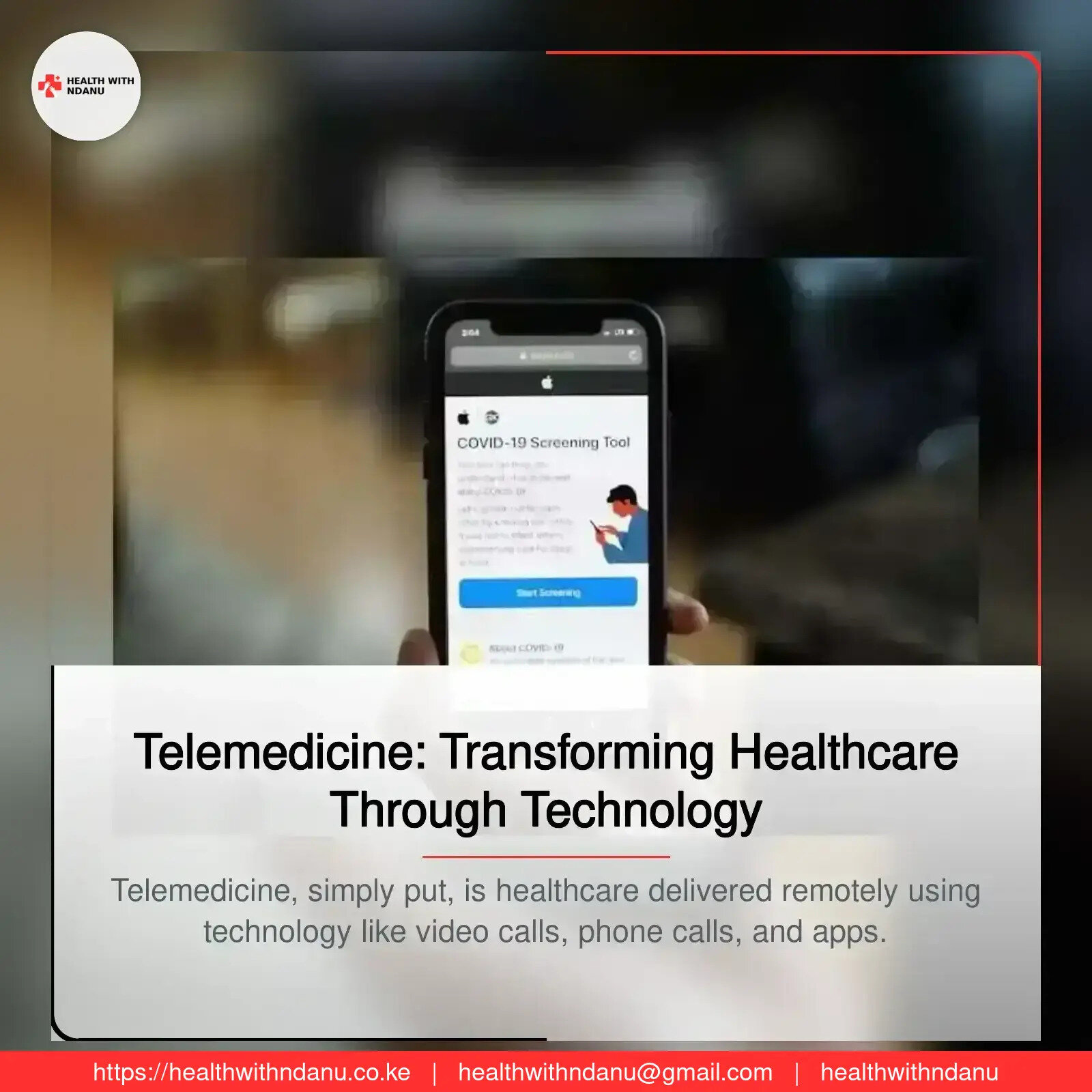Telemedicine: Transforming Healthcare Through Technology
- by Diana Ndanu
- 11 January, 2025
- 0 Comments
- 5 Mins



Introduction
Imagine consulting with a doctor from the comfort of your own home, no waiting rooms, no travel, and no stress. That’s the magic of telemedicine! Over the past few years, telemedicine has taken the healthcare world by storm, making it easier for people to access medical care when and where they need it.
In this article, we’ll dive into what telemedicine is, how it works, its benefits, challenges, and what the future holds—all in a conversational tone to keep things engaging.
What is Telemedicine?
Telemedicine, simply put, is healthcare delivered remotely using technology like video calls, phone calls, and apps. It bridges the gap between patients and healthcare providers, allowing consultations, diagnoses, and even treatment plans to happen without stepping into a clinic or hospital.
Whether you’re managing a chronic condition, need a quick prescription refill, or want to consult a specialist hundreds of miles away, telemedicine makes it possible.
How Does Telemedicine Work?
Telemedicine combines technology with medical expertise. Here’s how it typically works:
1. Schedule an Appointment: Many healthcare providers offer online platforms or apps where you can book a virtual consultation.
2. Connect with a Doctor: At your scheduled time, you connect via video call, phone call, or even chat, depending on the service.
3. Discuss Symptoms: Share your health concerns just like you would in person.
4. Receive Care: The doctor may offer advice, prescribe medications, or recommend tests—all remotely.
Some advanced telemedicine services even use wearable devices to monitor your vitals in real-time!
Benefits of Telemedicine
Why is everyone talking about telemedicine? Here are some reasons:
1. Convenience
Say goodbye to long commutes and waiting room delays. Telemedicine allows you to see a doctor from your couch, your office, or anywhere else.
2. Accessibility
For people in rural or remote areas, telemedicine can be a game-changer. It provides access to specialists and healthcare services that might otherwise be out of reach.
3. Cost-Effectiveness
Telemedicine reduces costs—for both patients and providers. You save on travel expenses, and virtual visits are often cheaper than in-person ones.
4. Continuity of Care
Managing chronic conditions like diabetes or hypertension? Telemedicine makes regular check-ins with your doctor easy and efficient.
5. Infection Control
During pandemics or flu seasons, telemedicine helps reduce the risk of exposure by keeping non-urgent cases out of clinics and hospitals.
Types of Telemedicine
Let’s break it down further into the types of telemedicine you might encounter:
1. Live Video Consultations (Synchronous Telemedicine)
This is the most common type—real-time video calls with a healthcare provider. Perfect for immediate consultations.
2. Store-and-Forward (Asynchronous Telemedicine)
In this method, you send medical information, like images or reports, for your doctor to review later. This is great for dermatology or radiology cases.
3. Remote Patient Monitoring (RPM)
Wearable devices like glucose monitors or heart rate trackers send data to your doctor in real time, allowing for ongoing care without constant visits.
4. Mobile Health (mHealth)
Health apps are a part of telemedicine too! They can remind you to take medications, track symptoms, or even guide you through exercises.
Challenges of Telemedicine
While telemedicine offers numerous benefits, it’s not without its hurdles:
1. Technology Limitations
Not everyone has access to high-speed internet or a smartphone, which can make telemedicine inaccessible for some.
2. Privacy Concerns
Protecting sensitive patient data is a major challenge. Healthcare providers must adhere to strict privacy laws like HIPAA to ensure security.
3. Not Suitable for All Cases
Some medical issues require physical examinations or tests that can’t be done remotely.
4. Regulatory Barriers
Licensing laws and reimbursement policies for telemedicine vary across states and countries, which can complicate its implementation.
The Future of Telemedicine
The future of telemedicine is bright and evolving rapidly. With advancements in artificial intelligence (AI), wearable devices, and 5G technology, remote healthcare is set to become even more accessible and efficient.
Expect to see:
- AI Diagnostics: AI tools that assist doctors in diagnosing conditions remotely.
- Improved Wearables: Devices that monitor multiple health metrics in real time.
- Expanded Global Reach: Telemedicine breaking down borders to provide healthcare worldwide.
Is Telemedicine Right for You?
If you’re wondering whether telemedicine is a good fit, the answer depends on your needs. For minor illnesses, routine check-ups, or ongoing management of chronic conditions, telemedicine can save you time and hassle. However, for emergencies or conditions requiring in-person examinations, a physical visit is still essential.
Final Thoughts
Telemedicine is revolutionizing healthcare by making it more patient-centric, accessible, and convenient. While challenges exist, its potential to improve health outcomes and reach underserved populations cannot be overstated.
As technology continues to advance, telemedicine will play an even bigger role in our lives. So, the next time you need medical care, why not give telemedicine a try? It just might change the way you experience healthcare.
If this article helped you understand telemedicine better, share it with others to spread awareness!
Got Your Own Experience? Share with us
Popular Categories
Mablogu Zinazobambwa Sana
Daily Newsletter
Get all the top stories from Blogs to keep track.



